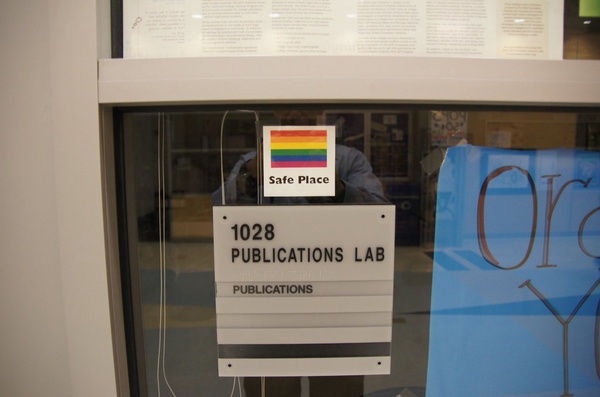The Support of LGBTQ+ in Schools and Why it Matters

December 10, 2020
The physical and social safety of every student attending Capital High School should always be a top priority. Are there, though, some types of students who experience different levels of emotional and physical safety? For example, in school, do students in the LGBTQ+ community still experience discrimination even in a safe place like CHS? Our school promotes clubs and activities and visuals cues, like posters and stickers, ensuring safety, but to what extent do those reflect the reality?
Experiencing discrimination is detrimental to a student’s health and to their productivity in school. For the LGBTQ+ community, specifically, “Research has shown how… discrimination … can cause people to stay ‘in the closet’ – because of worries about negative responses to their sexual orientation or gender identity. [The stress is] ‘known as “minority stress’ – which is essentially stress experienced by stigmatized minority groups.”
This stress can lead to minority “mental and physical health problems within the LGBTQ community” and “[Alicia] Guzman adds that LGBTQ youth tend to feel ostracized and are at a higher risk of suicide” which might be the reason for such a high rise of suicide rates in teens. Despite discrimination being illegal in all 50 states discrimination still happens.
While it may be common to feel safe at CHS, as Guillermina Ventura puts it, “I feel safe but at the same time I don’t. The teachers and our community make me feel safe, but there are people saying stuff.” Stuff like slurs. Red Ceder recounts how there was one time they were called slurs, both racial and LGBTQ+ specific.
Despite being in remote learning, there are new layers to discrimination with little direction as to what a student can do to better protect themself from what they see. As Rebekah puts it, “I felt comfortable in the classroom in person, but in online learning when people would have certain political profile pictures in the zooms and would make me feel unsafe.”
Art teacher David Wall shared how he supports his students. “I try and talk to them about their identity, engage with them because I think talking about the subject with someone kind of honors them as an individual.”
Wall continued with ideas on how to make students feel safer in school, “It’s a lot based on interactions with other people in the environment, I think once the subject is brought up and talked about in an open and kind way, people think of it as a safe space.”
Students interviewed agreed that having groups like Pizza Klatch and GSA have helped to make a safer environment. Pizza Klatch was described as being “you eat pizza and be gay” by Austin Trujillo and Allison Moodenbaugh.
Ultimately, the students stated that it’s the teachers and their friends that provide safety and support. In general though, the school provides the foundation for groups, activities, and supportive connections to be formed. It’s also good to keep in mind that the school is there to enforce violations of one’s civil liberties.
Sources:
| 1 Why LGBTQ inclusivity still matters in higher education From The Conversation by Nicola K Gale & Nicki Ward. |
| 2 Teaching LGBTQ Youth: Creating Inclusive Classrooms From Accredited by Dr. Traci Lawenthal. |
